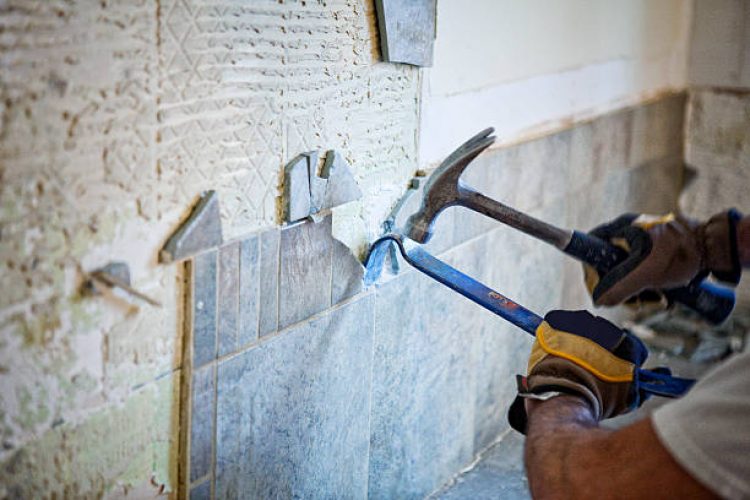When most people think of demolition, they envision dramatic explosions and crashing buildings. However, modern demolition contracting is a sophisticated industry that goes far beyond simple destruction. Today’s demolition contractors are skilled professionals who combine engineering expertise, environmental responsibility, and advanced safety protocols to deliver precise, strategic solutions for complex construction challenges.
The Growing Demolition Industry: By the Numbers
The demolition industry has experienced remarkable growth in recent years. Industry revenue has been increasing at a CAGR of 3.6% over the past five years to total an estimated $9.5 billion in 2024, including an estimated increase of 4.1% in 2024. This growth is driven by several key factors:
Infrastructure Investment: The Infrastructure Investment and Jobs Act has poured substantial funding into expanding and modernizing transportation infrastructure, creating numerous opportunities for contractors tasked with site demolition.
Urban Development: This strong housing growth contributed to an uptick in the demolition of aging homes throughout the US to replace them with new homes, greatly benefitting contractors.
Severe Weather Events: Major hurricanes such as Dorian in 2019, Laura in 2020, Ida in 2021, Ian in 2022 and Milton in 2024 have played a significant role in increasing the need for demolition and wrecking of residential structures damaged by storms.
Despite this growth, demolition and wrecking services comprise just .04% of the total US construction market, with over 400,804 demolition workers currently employed in the United States.
Beyond Simple Destruction: The Professional Demolition Contractor
Professional demolition contractors are far more than wrecking crews. They are specialized professionals who bring engineering knowledge, environmental expertise, and regulatory compliance to complex projects. A demolition contractor is a professional who specializes in demolishing buildings and other structures. They are responsible for safely and efficiently removing materials, such as concrete, brick, drywall, steel, wood, plaster, insulation, etc., from a building to make way for new construction.
The Types of Demolition Services
Modern demolition contractors offer several specialized services, each requiring different expertise and equipment:
1. Selective Demolition
Selective demolition is the targeted removal of certain parts or components of a building. This type of service is often used when a structure needs to be renovated or remodeled. Targeting only specific areas makes it possible to save time and money compared to total demolition.
Selective demolition is a precise and strategic approach to dismantling structures, allowing for the removal of specific portions while preserving valuable elements. Unlike traditional demolition methods that often involve leveling an entire structure, selective demolition is like surgical precision for the built environment. It’s about deconstructing with a purpose, targeting only the areas that need to go while leaving the rest intact.
2. Structural Demolition
Structural demolition—versus complete building demolition—typically involves selective demolition within a concrete and steel structure. This service is usually required to seismically retrofit an existing structure to bring it up to current code, or to strengthen the structure. Structural demolition is also used during the renovation of existing structures to add features such as new stairs and elevators in a hotel or mall, or to add onto an existing structure.
3. Interior Demolition
Interior demolition focuses on the internal components of a structure while leaving the exterior shell intact. This usually includes removal of walls, ceilings, pipes, etc.
4. Mechanical Demolition
Mechanical demolition uses specialized mechanical equipment and tools. These include hydraulic excavators equipped with specialized attachments that can break concrete and steel, effectively “chewing” the structure apart. Smaller equipment like skid steers loaders and demolition robots are used for smaller tasks and interior and selective demolition.
5. Implosion
While dramatic, implosions account for less than 1% of work in demolition and require highly specialized expertise and extensive safety protocols.
Safety First: OSHA Standards and Professional Requirements
Demolition work presents unique hazards that require specialized safety protocols. Demolition involves additional hazards due to unknown factors which makes demolition work particularly dangerous.
Regulatory Compliance
Demolition work involves many of the hazards associated with construction; therefore, all of 29 CFR Part 1926 – Construction Standards apply at a demolition site. However, demolition involves additional hazards due to unknown hazards, which makes demolition work particularly dangerous. For this reason, OSHA created the Subpart T – Demolition standards specifically for these operations.
The most frequently cited OSHA violation in demolition work is 1926.850(a) – Preparatory operations. This standard accounts for up to three-fourths of the citations on a demolition worksite. 1926.850(a)(1), which requires an “engineering survey” to be completed prior to starting demolition, accounts for more than half these preparatory operations citations.
Engineering Surveys: The Foundation of Safe Demolition
Prior to permitting employees to start demolition operations, an engineering survey shall be made, by a competent person, of the structure to determine the condition of the framing, floors, and walls, and possibility of unplanned collapse of any portion of the structure. Any adjacent structure where employees may be exposed shall also be similarly checked. The employer shall have in writing evidence that such a survey has been performed.
This requirement underscores the professional, engineering-focused approach that modern demolition contractors must take, distinguishing them from simple cleanup services.
Environmental Responsibility: More Than Waste Management
One of the most significant developments in the demolition industry is the shift toward environmental responsibility and sustainable practices. Today’s professional demolition contractors are actively involved in waste reduction, material recovery, and environmental protection.
The Scale of Construction and Demolition Waste
The environmental impact of construction and demolition activities is substantial. In the United States alone, around 600 million tons of C&D debris are produced annually, representing approximately 25% of the country’s total waste stream. Construction and demolition, or C&D, debris is estimated to be nearly one-quarter of the national waste stream, which is the total waste generated in the United States in one year.
Recycling and Material Recovery
Professional demolition contractors have become leaders in material recovery and recycling. Between 90-97% of materials are recycled. In 2018, 76% of all C&D waste in the U.S. was recovered or recycled. Over 95% of concrete and asphalt concrete waste, the largest contributors to total C&D waste, was recovered in 2018.
The environmental benefits of this recycling approach are significant. Research shows that recycling offers net environmental benefit of 2.56 mpt and recycling avoids 6.41 kg CO2 eq emissions and saves 0.32 m2 land and 89.93 MJ energy.
Economic and Environmental Benefits
The research findings show that recycling CDW leads to significant reductions in emissions, energy use, global warming potential (GWP), and conserves landfills space when compared to disposal of wastes in landfills.
A major environmental benefit is resource conservation. Recycling concrete into aggregate for new projects reduces the need for raw material extraction. Recycling steel saves iron ore, coal, and limestone that would otherwise be mined. The environmental math is compelling: recycling one ton of steel conserves 2,500 pounds of iron ore, 1,400 pounds of coal, and 120 pounds of limestone.
Advanced Planning and Project Management
Professional demolition contractors approach each project with detailed planning and project management expertise that goes far beyond simple cleanup operations.
Pre-Demolition Assessment
Before the start of every demolition job, the demolition contractor should take a number of steps to safeguard the health and safety of workers at the job site. These preparatory operations involve the overall planning of the demolition job, including the methods to be used to bring the structure down, the equipment necessary to do the job, and the measures to be taken to perform the work safely. Planning for a demolition job is as important as actually doing the work.
Utility Location and Hazardous Materials
One of the most important elements of the pre-job planning is the location of all utility services. All electric, gas, water, steam, sewer, and other services lines should be shut off, capped, or otherwise controlled, at or outside the building before demolition work is started.
It shall also be determined if any type of hazardous chemicals, gases, explosives, flammable materials, or similarly dangerous substances have been used in any pipes, tanks, or other equipment on the property. When the presence of any such substances is apparent or suspected, testing and purging shall be performed and the hazard eliminated before demolition is started.
Specialized Equipment and Technology
Modern demolition contractors utilize sophisticated equipment that enables precision work while maintaining safety and environmental standards. Mechanical demolition uses specialized mechanical equipment and tools. These include hydraulic excavators equipped with specialized attachments that can break concrete and steel, effectively “chewing” the structure apart.
Precision Demolition Technology
Selective concrete demolition uses state of the art equipment and specialized means and methods to safely and successfully remove concrete while preserving the structural integrity of elements that are to remain in place. These means and methods are typically executed by isolating the structural elements to be removed from the elements to remain in place at the designated demolition limits. By using precise methods of concrete wire saw cutting, track/wall sawing, line drilling, or other mechanical means prior to the removal of the designated demolition area, contractors can ensure required structural elements remain in place and are not impacted by the removal process.
Economic Benefits and Cost-Effectiveness
Professional demolition contractors provide significant economic benefits that extend beyond the immediate project scope.
Cost Savings Through Selective Demolition
Commercial demolition costs an average of less than 2% of the replacement cost of the building. One of the core benefits of structural demolition, when the service is relevant to a project, is that an owner or developer can retain and reuse large portions of the existing structure while avoiding the significantly higher costs associated with complete building demolition and rebuild. Another core benefit is that structural demolition can be completed on an accelerated timeline.
Material Recovery Value
Recycling efforts have turned demolition services into lucrative ventures. Rising material costs and environmental concerns drive contractors to prioritize dismantling and recycling, turning old buildings into valuable resources.
The Future of Demolition Contracting
The demolition industry continues to evolve with new technologies and approaches that emphasize sustainability, safety, and precision.
Technology Integration
The market is influenced by trends towards sustainable construction practices and innovations in technology, such as AI and robotics, which enhance efficiency and reduce environmental impact. To further encourage safety, efficiency, and sustainability in demolition projects, companies are announcing new demolition innovations. The invention incorporates AI robots with big data analysis, enabling speed and precision efficiency for demolition operations.
Sustainable Practices
Deconstruction is the process of carefully dismantling buildings to salvage components for reuse and recycling. Deconstruction can be applied on a number of levels to salvage usable materials and significantly cut waste. Deconstruction has many benefits, including the following: Maximizes the recovery of materials. Conserves finite, old-growth forest resources.
Market Outlook and Growth Potential
The demolition contracting industry shows strong growth potential driven by infrastructure needs and environmental regulations. New bridge construction activity will climb over the next five years and benefit demolition and wrecking contractors. Pete Buttigieg, the Secretary of Transportation, announced funding for replacing various economically significant bridges throughout the US in July of 2024.
The construction and demolition waste management market is expected to experience significant growth, with market size estimated at US$ 162.02 billion in 2023 and expected to reach US$ 261.20 billion by 2032, at a CAGR of 5.50% during the forecast period of 2024-2032.
Choosing the Right Demolition Contractor
When selecting a demolition contractor, property owners should look for professionals who offer comprehensive services that go beyond simple cleanup:
- Engineering Expertise: Contractors who conduct proper engineering surveys and structural assessments
- Environmental Responsibility: Companies with proven recycling and waste management programs
- Safety Record: Contractors with strong OSHA compliance and safety protocols
- Specialized Equipment: Firms with access to precision demolition tools and technology
- Project Management: Companies that provide detailed planning and project oversight
- Regulatory Knowledge: Contractors familiar with local, state, and federal regulations
Conclusion
Modern demolition contracting has evolved far beyond simple wrecking and cleanup operations. Today’s professional demolition contractors are sophisticated service providers who combine engineering expertise, environmental responsibility, advanced safety protocols, and precision technology to deliver strategic solutions for complex construction challenges.
Whether you need selective demolition for a renovation project, structural demolition for a seismic retrofit, or complete building removal with maximum material recovery, professional demolition contractors provide value that extends far beyond basic cleanup. They are partners in sustainable development, safety professionals, and skilled technicians who help shape the built environment while protecting workers, communities, and natural resources.
As the industry continues to grow and evolve, the distinction between professional demolition contractors and basic cleanup services will only become more pronounced. Property owners who recognize this difference and choose experienced, professional demolition contractors will benefit from safer projects, better environmental outcomes, and more cost-effective solutions.
References:













